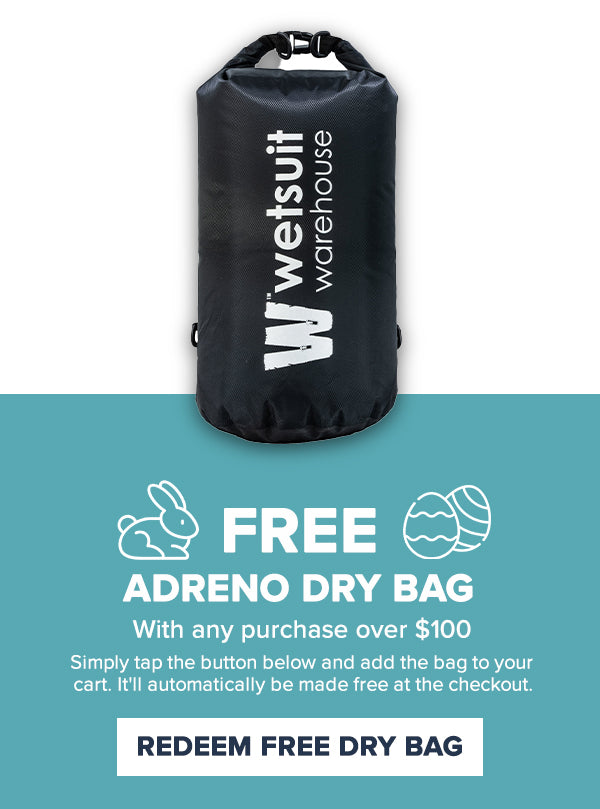Commercial Wetsuit FAQ
2. What is the best commercial wetsuit for cold conditions?
If you are going to be spending a long time in cold water conditions then thermal insulation will be your priority. Commercial wetsuits are available in 7mm and 9mm options and many come with additional soft fleece inner linings. For extra warmth you could also wear an insulating vest underneath your wetsuit as well. Boots, gloves and hoods are essential pieces of kit when you are diving in cold water conditions to help keep your body temperature constant. Commercial wetsuits will also offer double secured glued, stitched and taped seams which will prevent cold water from leaking into the suit.
3. What wetsuit do I need for reef exploration?
If you are going to be exploring reefs then you need to think about additional protection when you buy your wetsuit. Rocks and corals around reefs can be very abrasive and hard on your hands, feet and knees. Commercial wetsuits are much harder wearing than standard wetsuits and can offer additional protection in key areas such as your knees. You will also need to buy hard wearing gloves and boots to protect your hands and feet from sharp rocks and debris.
4. Are commercial wetsuits more flexible than standard wetsuits?
Commercial wetsuits come in many different designs. The flexibility of a wetsuit does depend on the type of neoprene used. Top grade non-commercial wetsuits are made from 100% super stretch neoprene which is light and flexible. However commercial grade wetsuits can go even farther than this. Some are made from the very latest materials such as the finest Chloroprene grade Super-Light Neoprene. This material is incredibly light and flexible and is extremely comfortable to wear. Professional divers, freedivers and triathletes use suits made from these types of cutting edge materials because as well as being very flexible they are also very durable and have a high compression resistance. If you need the most flexible suit available then you may need to invest in one of the top commercial grade wetsuits.
5. Can you get two piece commercial wetsuits?
Manufacturers make both one and two piece commercial wetsuits. The two piece options are normally designed for cold water conditions. These suits can offer hooded jacket pieces with additional heavy duty outer linings (made from materials such as Tuftex). The jacket section can come with or without zips.
6. Do commercial wetsuits offer better buoyancy?
In order to create additional heat insulation and buoyancy in wetsuits tiny bubbles of nitrogen gas are injected into the neoprene material. Commercial wetsuits use improved manufacturing methods to optimise these effects. This can mean that commercial wetsuits can offer superior buoyancy to standard wetsuits in most cases.
7. What is a skin -in wetsuit?
Professional freedivers often refer to certain wetsuits are being ‘skin-in’. This basically means that the wetsuit has no interior lining. Commercial and standard wetsuits come in two basic categories, those with a fabric lining and those without. The fabric lining can be made of Nylon, Lycra or even warm fleece. Lined wetsuits are more comfortable and easier to put on in most cases. However many freedivers prefer a wetsuit without lining as this provides a closer, more perfect fit.
8. Do you need to lubricate wetsuits before you put them on?
Wetsuits can be tricky to get on, especially if you need a wetsuit with the closest fit possible such as in professional freediving. You can make it easier to put on a wetsuit by carefully lubricating the cuff sections at the ankles and wrists. Many divers use either talcum powder or a mixture of hair conditioner and a little water to do this. You should avoid using petroleum jelly as this will degrade the neoprene and cause it to crack and dry out over time.
9. What thickness commercial wetsuit do I need?
To estimate the thickness of wetsuit you need you have to consider water temperatures. The colder the water the thicker the wetsuit you will need to keep warm. This will also depend on your own resistance to the cold. If you are engaging in an active sport then you will need to balance warmth with flexibility (the thicker the wetsuit the less flexible it will be). However if you are going to be sitting or standing around (such as supervising a training session) then you can just concentrate on warmth. As a general rule these wetsuit thicknesses are suitable for the following water temperatures:
- 25 degrees centigrade and above – 2mm shortie wetsuit
- 20 to 25 degrees centigrade - 3/2mm full length wetsuit
- 15 to 20 degrees centigrade – 5mm or 5/3mm full length wetsuit
- 10 to 15 degrees centigrade – commercial 7mm full length wetsuit
- Under 10 degrees centigrade – commercial 9mm full length wetsuit
10. How can I make my wetsuit warmer?
You may not be able to afford to buy a separate wetsuit for summer and winter conditions. However you can make a summer weight wetsuits warmer by adding a hood, boots and gloves. You can also buy a thermal vest to go underneath your wetsuit. This will help to retain heat around key areas of your body and will increase the warmth of your wetsuit.


